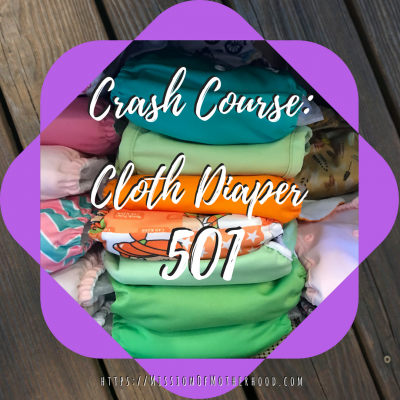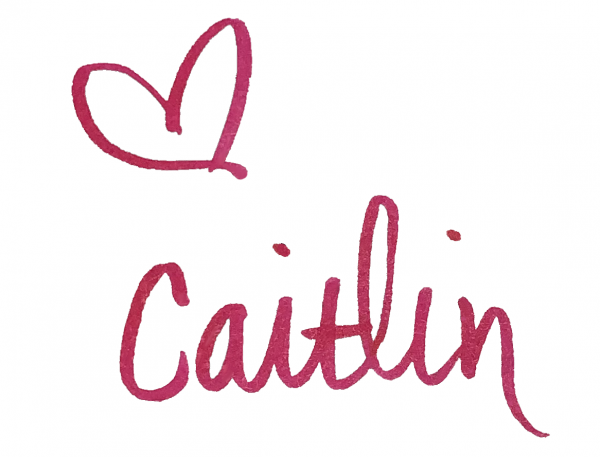Advanced Level Cloth Diapering: Troubleshooting, Stripping, Yeast, and Bleach
This post may contain affiliate links. View my disclosures page for more information.
You’re back! This is a post I hope you never need, but just in case, here are some tips on troubleshooting stinky diapers, treating for yeast, and how to strip or soak your cloth diapers! Unfortunately, much of this I’ve learned from experience, and like I said — I hope you never need it! I think its always easier to learn from someone ELSE’S mistakes so you don’t have to make your own! In any case, I hope it’ll benefit you either way.

If you’re new to cloth diapering, or you have no idea what I just said, I encourage you to check out my previous posts:
See also:
Cloth Diaper 101: getting started with cloth diapers
Cloth Diaper 201: overnight cloth diapers
Cloth Diaper 301: storing, cleaning, and laundering your cloth diapers
Cloth Diaper 401: cloth wipes, and diaper safe creams, powders, and combatting diaper rash
Cloth Diaper 501: troubleshooting cloth diapers: stinks, strip, yeast, and bleach soaks
Cloth Diaper 601: repairs and modifications to your cloth diapers
Diapers Stink!
Bleh, nobody likes an ammonia or barnyard smell on “clean” diapers! Chances are, if you’re experiencing this issue, your diapers are simply not clean. In order to make sure they get properly cleaned, you need to have a good solid wash routine that uses enough detergent (not soap) and enough hot water. In the days of front-loading HE machines, this is entirely attainable, so don’t be scared.
The trick is making sure your load is filled enough so that the sensors in your machine know to add more water. My HE frontloader does best at 2/3 to 3/4 full. I actually measured the drum with a measuring tape inside and marked an arrow with permanent marker just inside the door so I get it right every time. Filling the load ensures there’s enough friction on the items in the load to get them properly cleaned. Another trick is using enough of the RIGHT detergent, and sorry folks, but not all detergents are created equal.
- Start by finding your machine, or the closest one to it, in the index here. No need for me to reinvent the wheel, they’ve already done the work. Not everyone is a huge FLDS fan but here at the Wagner house we are pro-science.
- Next, find your desired detergent here. I’ll save you a lot of time: Tide original powder is where it’s at. If the scents bother you, Tide free & clear powder is second best. Really and truly, powder works the best, getting your diapers cleaner, faster, thus saving you money in the end. No, I don’t get any promotional kickbacks from Tide, but believe me I wish I did. We saw so much success with Tide powder on our diapers that we ended up switching the rest of our laundry to Tide powder. If you buy it at BJs every so often they have coupons that overlap in the mail and you can double up on them if you use self-checkout. #praisehands
- Make sure your load is full enough, your water hot enough, and you are using enough detergent. If your diapers smell dirty, they are dirty. You need enough hot water, enough friction, and enough detergent to get them clean.
Stripping Diapers
Sometimes there is too much build up from improper wash routines that cleaning simply isn’t enough, and you need to strip the diapers and liners of the extra build up. That build up can be from detergent, minerals from water, fabric softeners, rash creams, etc. It can be time to strip diapers if you notice any of your inserts or liners repelling water.
Stripping can be really hard on diapers, so take care not to do it too often. I always strip clean diapers (meaning they’ve been run through a good wash and rinse and dry cycle before I strip them), and any time I buy pre-loved diapers I like to strip them before they go on my baby’s bottom.
Some people say that after stripping their diapers, they notice they don’t absorb as much for the first few washes. I never noticed this to be the case, but I guess it’s something to look out for.
Again, I’m not gonna reinvent the wheel, because this resource here has been tried and true, and works for me without fail every time.
When I don’t have the time to do a full strip (again, I want to stress that you really should not have a need to be stripping regularly…my first problem with my cloth diapers was washing for months in untreated hard water, and we had tons of mineral buildup because I wasn’t using the right amount of detergent or water softener), I like these Grovia pods. I just follow the instructions on the package, using 1-2 pods in a clean load, and following up with a hot wash/cold rinse cycle.
Yeast!
I mentioned yeast in Cloth Diaper 401 because I feel like even though there are fewer rashes in cloth diapers in general, yeast is a common diaper rash across all diapered tushies: cloth or disposable!
For a yeast rash, make sure you’re not using creams or ointments or powders that can be feeding yeast: avoid anything with a steroid (cortisone), cornstarch, etc. Yeast diaper rashes can be bumpy but usually look “beefy red:” shiny, red, and occasionally satellite lesions can appear. Yeast likes warm, dark, moist, so quite often you’ll find it in the rolls and folds of the baby’s skin.
Yeast diaper rashes in a cloth diaper are not a death sentence! We use a topical antifungal (miconazole 2% or clotrimazole 1%) for about 10-14 days after the rash appears to be cleared, lots of air/sunlight time whenever possible, and change the diaper as often as possible (to avoid the skin/diaper sitting in dark, moist areas). Occasionally you may get a rash cultured and be prescribed a prescription cream — if that’s the case, use a diaper liner if you can, because sometimes those creams stain or contain petroleum jelly. It’s also important to treat the diapers, too! I use this recommendation from Fluff Love, and it has NOT FAILED ME. My youngest had a stubborn yeast rash but once I followed these instructions WHILE treating her rash, our troubles went away.
Follow the instructions for doing the bleach soak to disinfect the diapers (this will not ruin your diapers, even cotton ones, as long as you follow the directions! I have done other bleach soaks many times when buying or borrowing preloved cloth, and have had no issues with staining or fading). Then follow up per the instructions by adding bleach to your laundry routine for 14 days after the yeast rash is controlled.
I wrote more about yeast here. It’s not the end of the world, but it sure is pesky.
Bleach Soak
Bleach is another way to sanitize diapers after an infection that can be passed from fecal matter or urine, a yeast rash, or when buying preloved diapers. Bleach does not get diapers clean, a good wash routine with enough detergent does. Bleach sanitizes. When done properly, there will be little to no fading, but as with stripping above, it can be time consuming and shouldn’t be done regularly unless there’s a need.
I usually use my bathtub, and I put all the diapers in a laundry basket when they’re done so I can easily take them back to the laundry room to follow up with a wash. Stripping and bleaching both require starting with clean diapers and following up with a hot wash and rinse, so it’s best to plan ahead since with either of these your diaper laundry day may take a bit longer than usual.
I follow these instructions here for how to bleach my cloth diapers. I’ve used other methods, googled and pinterested other recommendations, and tried my own concoctions, but this one is the one that has worked the best for me, with the least amount of fading, and the least amount of leftover bleach smell with the cleanest result. It’s really win-win.
That’s a Wrap!
What did I miss? Any questions or comments, readers? How has cloth been treating you — or how are you treating your cloth? Leave a comment, I’d love to know!


